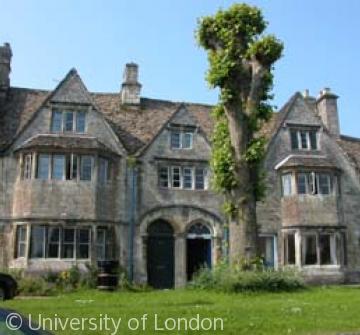Sheep Street (south): Nos 33 and 35

Behind a remodelled 17th-century façade are remains of another medieval house, documented from 1492 when the guild of the chapel of St Mary in Burford church owned it. A passageway at No. 35 leads to a courtyard, to the left of which is a medieval Caernarvon arch forming a doorway through a thick rubble wall to the Masonic Hall behind. The upper room to the left has three cruck trusses with extended knees, probably of the mid 15th century. The guild presumably lost the building at the Reformation, and in 1550 the merchant Edmund Silvester (who owned several Burford houses) acquired it, leaving it in 1569 to his fourth son Thomas. By the early 17th century Thomas Bignell was probably owner, and in the 1680s–1710s Daniel Payton, Simon Partridge, and John Andrews.
The Sheep Street range may date from the late 17th century, and originally had a through carriageway to the rear courtyard. Possibly it functioned for a time as an inn. The carriageway was blocked to form two doorways in the mid 19th century, when a former doorway to the right was blocked to form two small windows. The drip moulds to the gable dormers extend awkwardly over the bargeboards, suggesting that they, too, are later additions. By then the house was apparently subdivided: it was occupied in the 1840s by a farmer, confectioner, and two cabinet makers, and in the 1860s by a servant (with his family), a female teacher with 2 resident pupils, and the attorney Thomas Mann. It remained two houses in 2007.
The Masonic Hall was established in an outbuilding at the back before 1915.
See: Listed Buildings Description; RH Gretton, The Burford Records (1920), 321–2, 334, 344–5, 352, 356–7, 359; The National Archives: PRO, PROB 11/51, f. 40
Content generated during research for the paperback book 'Burford: Buildings and People in a Cotswold Town' (ISBN 13 : 9781860774881) for the England's Past for Everyone series

